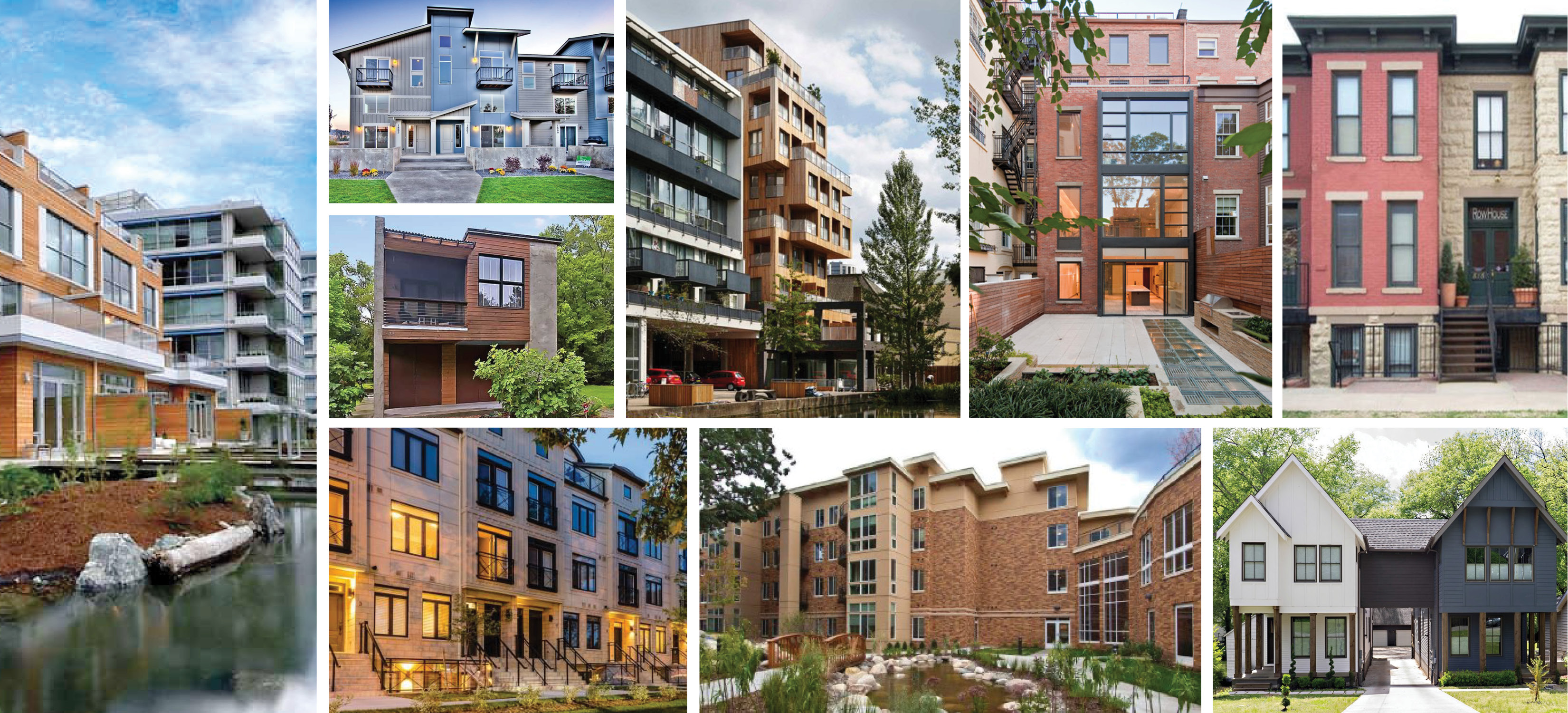Chairman Latta Delivers Opening Statement at Subcommittee on Energy Hearing on Affordability, Choice, and Security in Appliance and Building Policies – House Committee on Energy and Commerce (.gov)

Report on U.S. Appliance and Building Policies in the Context of Sustainable Development Goals
Introduction: Examining Policy Impacts on Sustainable Development
A congressional hearing titled Building the American Dream: Examining Affordability, Choice, and Security in Appliance and Buildings Policies was convened to analyze the effects of current energy policies on American households and businesses. The discussion focused on the intersection of energy efficiency mandates, consumer costs, and grid security, evaluating their alignment with key United Nations Sustainable Development Goals (SDGs), particularly those concerning poverty, energy, and sustainable communities.
Alignment with SDG 7: Affordable and Clean Energy
The hearing scrutinized whether current policies effectively balance the dual objectives of SDG 7: ensuring access to affordable, reliable, sustainable, and modern energy for all. A central concern was that the push for electrification, intended to advance the “clean energy” aspect, may be undermining the “affordable” component.
- Affordability and Access (Target 7.1): It was argued that policies promoting forced electrification have led to increased energy and product prices, disproportionately affecting low-income households and challenging the goal of universal access to affordable energy. Data was cited suggesting that homes with natural gas connections are significantly more affordable than all-electric options.
- Energy Efficiency (Target 7.3): While acknowledging the importance of energy conservation, the hearing questioned the effectiveness of the current statutory process for energy efficiency standards. The focus has reportedly shifted from tangible cost savings and efficiency gains to mandated technological transitions that may not be economically viable for all consumers.
- Policy Reform: A call was made to reform the Department of Energy’s (DOE) Appliance and Equipment Standards Program to better reflect the principles of SDG 7 by prioritizing consumer choice, affordability, and genuine energy savings.
Impact on SDG 11: Sustainable Cities and Communities
The discussion highlighted the direct impact of energy and building policies on housing affordability, a cornerstone of SDG 11, which aims to make cities and human settlements inclusive, safe, resilient, and sustainable.
- Affordable Housing (Target 11.1): A steady increase in home prices over the past 15 years has made homeownership unattainable for millions, a trend exacerbated by rising policy-driven costs. Homeowners now spend 34% more on household appliances than in 2010.
- Building Codes and Costs: The administration’s policy of tying Inflation Reduction Act (IRA) funding to the adoption of 2021 model energy codes was presented as a factor contributing to higher housing costs. Such measures, while aimed at sustainability, must be evaluated for their impact on the primary goal of ensuring access to adequate and affordable housing.
Challenges to SDG 9: Industry, Innovation, and Infrastructure
The reliability of national infrastructure, a key component of SDG 9, was identified as a significant area of concern. Policies mandating rapid electrification without corresponding infrastructure upgrades pose a risk to the stability of the energy grid.
- Resilient Infrastructure (Target 9.1): The hearing raised concerns that widespread electrification could add significant strain to the nation’s electric grid, potentially compromising its reliability.
- Federal Building Standards: A DOE rule mandating the elimination of fossil fuels in new and modified federal buildings by 2030 was cited as an example of a policy that could paradoxically increase overall energy usage and threaten grid stability. The application of this rule to critical infrastructure, including military and national security installations, was noted as a particular risk to national security and infrastructure resilience.
Conclusion and Recommended Path Forward
The hearing concluded with a call for a more balanced policy approach that integrates sustainability goals with economic realities. To achieve the SDGs in a just and effective manner, the following steps were implicitly recommended:
- Re-evaluate energy conservation standards to ensure they deliver measurable cost savings and efficiency without restricting consumer choice or imposing undue financial burdens, thereby upholding the principles of SDG 1 (No Poverty) and SDG 7 (Affordable and Clean Energy).
- Assess the impact of building codes and performance standards on housing costs to ensure they do not create barriers to achieving SDG 11 (Sustainable Cities and Communities).
- Develop energy policies that support a resilient and reliable grid, in line with SDG 9 (Industry, Innovation, and Infrastructure), by considering a diverse and affordable energy mix.
Analysis of Sustainable Development Goals in the Article
1. Which SDGs are addressed or connected to the issues highlighted in the article?
-
SDG 7: Affordable and Clean Energy
- The article is centered on energy policy, specifically discussing the affordability of energy for American families, energy efficiency standards, energy conservation, and the reliability of the nation’s electric grid. It critiques policies that promote electrification at the expense of affordability, referencing the cost difference between natural gas and electric options. The text mentions “raised energy and product prices,” “jeopardized grid reliability,” and the need for “affordable energy.”
-
SDG 11: Sustainable Cities and Communities
- The article directly addresses housing affordability, a key component of SDG 11. It states that “home ownership [is] out of reach for millions of Americans” and that “more than 80 percent of adults in the United States say housing affordability is a problem.” The discussion on building codes, such as the “2021 model energy codes,” is also directly relevant to sustainable housing and urban development policies.
-
SDG 12: Responsible Consumption and Production
- The debate over the Department of Energy’s “Appliance and Equipment Standards Program” and the goal of “energy conservation” relates to promoting resource and energy efficiency. The article discusses achieving “true energy savings” and the efficient use of resources, which are central themes of SDG 12, although it argues that current policies are misguided in their approach.
-
SDG 9: Industry, Innovation, and Infrastructure
- The article touches upon the need for reliable infrastructure, specifically the “nation’s electric grid,” which it claims is being strained by certain policies. The call to prioritize “innovation” in the execution of energy goals also aligns with SDG 9’s focus on fostering innovation and building resilient infrastructure.
2. What specific targets under those SDGs can be identified based on the article’s content?
-
Target 7.1: Ensure universal access to affordable, reliable and modern energy services.
- The article’s primary focus is on the “affordability” of energy and appliances for consumers. It criticizes policies for raising “energy and product prices” and highlights data showing “homes with natural gas hookups are over 3 times more affordable than electric options.” The concern over policies that have “jeopardized grid reliability” also directly connects to the “reliable” aspect of this target.
-
Target 7.3: Double the global rate of improvement in energy efficiency.
- The entire hearing is framed around energy efficiency. The article repeatedly mentions “energy efficiency,” “energy conservation,” and the “DOE’s Appliance and Equipment Standards Program.” While the speaker argues that the current process is “broken” and has “strayed from enhancing efficiencies,” the underlying subject is directly related to this target.
-
Target 11.1: Ensure access for all to adequate, safe and affordable housing.
- This target is explicitly addressed when the article states that rising costs have “put the dream of home ownership out of reach for millions of Americans.” The mention that “over the last 15 years, home prices have steadily increased” and that “housing affordability is a problem” directly links the discussion to the core objective of this target.
3. Are there any indicators mentioned or implied in the article that can be used to measure progress towards the identified targets?
-
Housing and Appliance Costs (Mentioned)
- The article provides specific data points that serve as indicators of declining affordability. These include: “homeowners now spend 34 percent more on household appliances than in 2010” and “home prices have steadily increased.” These metrics can be used to track progress towards the affordability aspects of Target 7.1 and Target 11.1.
-
Public Perception of Housing Affordability (Mentioned)
- The statistic that “more than 80 percent of adults in the United States say housing affordability is a problem” is a direct indicator of public sentiment and the scale of the affordability challenge, relevant to Target 11.1.
-
Relative Cost of Energy Sources (Mentioned)
- The article cites data that “homes with natural gas hookups are over 3 times more affordable than electric options.” This comparison serves as an indicator for measuring the affordability of different energy services, which is central to Target 7.1.
-
Grid Reliability and Strain (Implied)
- The concern that certain rules would “add further strain to our nation’s electric grid” and have “jeopardized grid reliability” implies that grid stability, capacity, and frequency of service interruptions are key indicators for measuring the reliability of energy infrastructure, as per Target 7.1.
Summary Table of SDGs, Targets, and Indicators
4. Create a table with three columns titled ‘SDGs, Targets and Indicators’ to present the findings from analyzing the article.
| SDGs | Targets | Indicators |
|---|---|---|
| SDG 7: Affordable and Clean Energy | 7.1: Ensure universal access to affordable, reliable and modern energy services. |
|
| 7.3: Double the global rate of improvement in energy efficiency. |
|
|
| SDG 11: Sustainable Cities and Communities | 11.1: Ensure access for all to adequate, safe and affordable housing. |
|
| SDG 12: Responsible Consumption and Production | (Targets related to energy efficiency and sustainable management of resources) |
|
| SDG 9: Industry, Innovation, and Infrastructure | (Targets related to developing reliable and resilient infrastructure) |
|
Source: energycommerce.house.gov

What is Your Reaction?
 Like
0
Like
0
 Dislike
0
Dislike
0
 Love
0
Love
0
 Funny
0
Funny
0
 Angry
0
Angry
0
 Sad
0
Sad
0
 Wow
0
Wow
0








































































